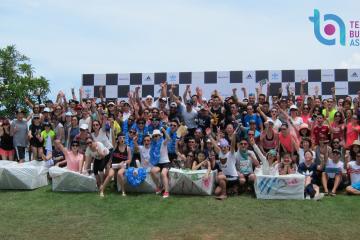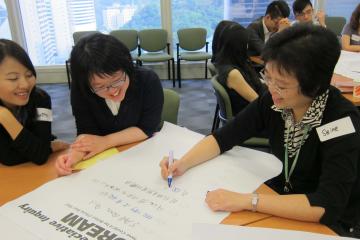Ever wonder what you can do to increase your productivity at work? And prevent injury? Everyone knows it’s good to have better posture and body use, but what does that really mean? Posture is simply keeping the body in good alignment, while body use (or biomechanics) is how the body actually works. There is a tremendous amount of drive and productivity that can be lost in the workplace, through poor body management.
With poor biomechanics come headaches, repetitive strain injuries and generally poor worker output. There are easy solutions to these sorts of problems, such as checking your work station. The chair you sit in is an important place to start. Does it support your entire spine properly? You should have good firm support up to the base of your neck, with your feet comfortably flat on the floor, or even better, with a small support to tip the toe end of the foot up. Next, are your arms well supported? The forearms should be well supported, either on your desk or on your chair handles. Last but not least, are you looking at your computer screen at eye level? This is very important, to decrease neck problems, which can lead to head aches and arm pain. Think about how uncomfortable it would be to walk around all day with your head bent forward! Why do it at work?!
It is also incredibly important to move around occasionally. Even if you break for a couple of minutes every half hour to an hour, it will give your body a break, and let you check in to how you are feeling. It can be so easy to freeze into one position. You can try swinging your arms gently, taking a few deep breaths, rolling your shoulders, or doing a few simple stretches. This will stimulate your circulation and brain activity, letting you be more effective and “on the ball”.
Another way to increase your productivity is drinking lots of water. Sounds so simple, something your mother might say, but a lot of people are constantly dehydrated, leading to headaches and lethargy. Coffee, tea and pop are diuretics, meaning they help you lose water, so they don’t count!
For anyone with more serious problems, getting a qualified professional to expand on these pointers is a good idea. This could include doing a personal work station assessment and/or a stretching & strengthening program.
Try following some of these easy suggestions, and see how much better you can feel, and more productive you can be!
By Jenny K. Woolsey - Registered Massage Therapist - Sutherland Chan Centre
Jenny K. Woolsey is a Registered Massage Therapist (RMT) from Ontario, Canada.
RMT is a protected title, and therapists undergo rigorous training and examination in order to hold the title under the RHPA (Regulated Health Professions Act). Jenny has worked extensively in private clinical practice across Canada and in Hong Kong.



